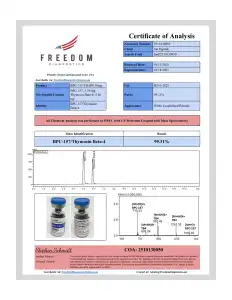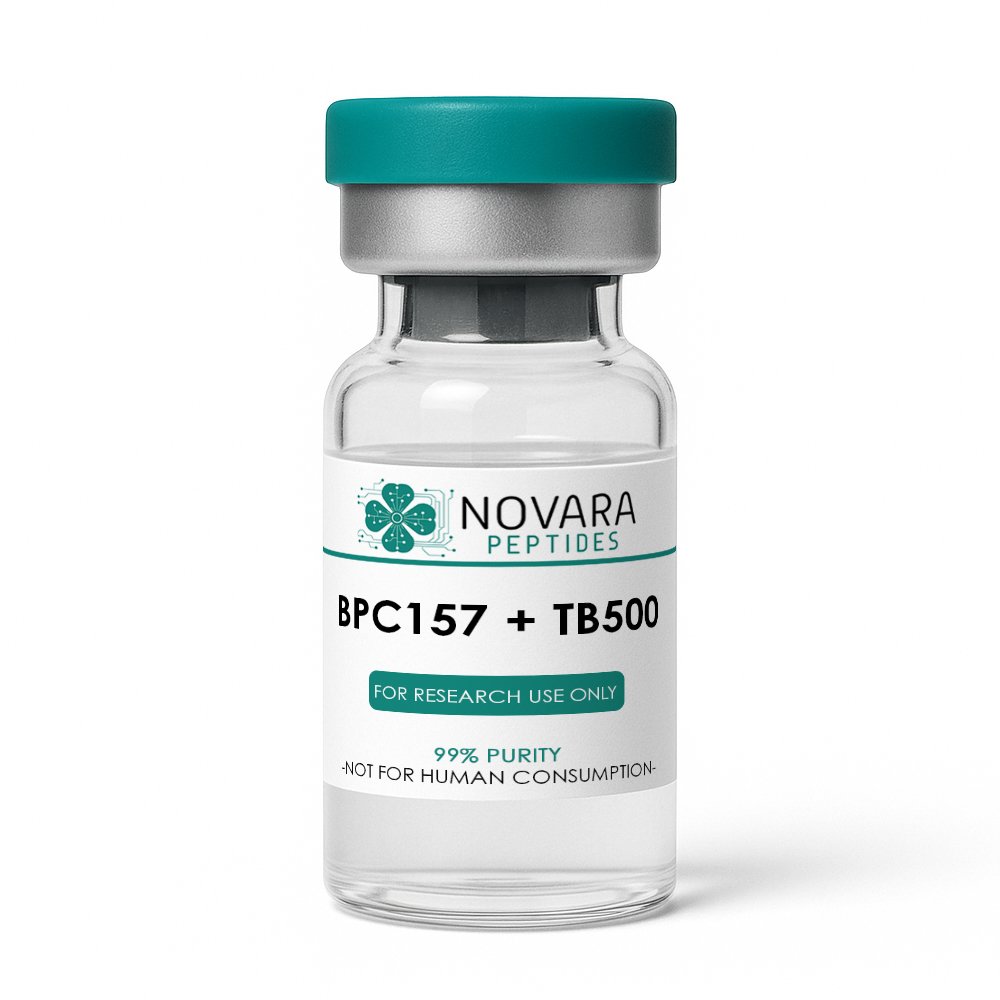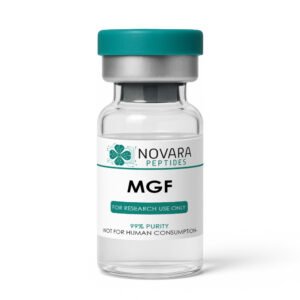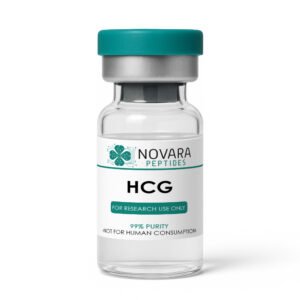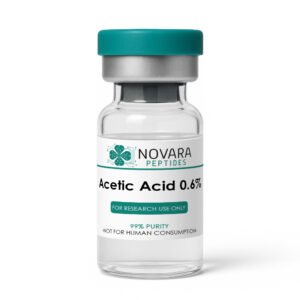BPC157+TB500
$ 52.00 – $ 79.00Price range: $ 52.00 through $ 79.00
All products are for laboratory research purposes only. Not for human consumption, medical, or veterinary use. ION Peptides does not condone or support the use of peptides outside of controlled scientific research. By purchasing, you acknowledge that you are a qualified researcher or institution. You must be 21 or older.




BPC-157 + TB-500
Research-Grade Peptide Combination
Tagline: Tissue Repair & Regeneration Research
Product Description
BPC-157 + TB-500 is a synergistic research combination of BPC-157 (a gastric pentadecapeptide known for its angiogenic and cytoprotective properties) and TB-500 (Thymosin Beta-4 Fragment) (a peptide that promotes actin polymerization and wound repair).
Researchers study this combination for its potential to accelerate wound healing, improve angiogenesis, reduce inflammation, and support connective tissue repair in musculoskeletal and cardiovascular injury models.
For Laboratory and Scientific Research Use Only. Not for Human Consumption.
Why Researchers Choose BPC-157 + TB-500
Complementary Mechanisms: BPC-157 supports angiogenesis and collagen repair, while TB-500 mobilizes actin and cell migration.
Wound Healing Research: Accelerates recovery in tendon, ligament, and muscle injury models.
Anti-Inflammatory Effects: Reduces systemic and localized inflammation markers.
Regenerative Potential: Studied for cardiac, neural, and GI tract tissue protection.
Batch Verified: ≥98% purity for both peptides, HPLC and MS confirmed.
Important Note
For laboratory and scientific research only. Not for human consumption, therapeutic, or diagnostic use.
| Components | BPC-157 (Gastric pentadecapeptide) + TB-500 (Thymosin Beta-4 fragment) |
| Chemical Formula | BPC-157: C₆₂H₉₈N₁₆O₂₂ | TB-500: C₂₁₂H₃₅₀N₅₆O₇₈S |
| Molecular Mass | BPC-157: ~1419 Da | TB-500: ~4964 Da |
| CAS Number | BPC-157: 137525-51-0 | TB-500: 77591-33-4 |
| Form | Two separate lyophilized peptide powders |
| Shelf Life | 24 months (lyophilized) |
| Intended Use | For preclinical and in vitro research only |
| Storage | -20 °C (dry powder), -80 °C (after reconstitution) |
Research Applications
Musculoskeletal Injury Models
Combination accelerates tendon, ligament, and muscle healing by enhancing angiogenesis and cellular migration [1].
Anti-Inflammatory Studies
Reduces expression of inflammatory cytokines (TNF-α, IL-6) and oxidative stress markers [2].
Cardiovascular Repair Research
TB-500 promotes actin polymerization and endothelial cell migration, aiding cardiac tissue recovery [3].
Neuroprotection & Gut Healing
BPC-157 has been shown to protect neurons from oxidative damage and improve gastric mucosa regeneration [4].
References
Chang J et al. (2014). BPC-157 and Tendon-to-Bone Healing Acceleration. Bone Joint Res.
https://www.paulinamedicalclinic.com/wp-content/uploads/2019/11/BPC-157-1.pdfGao H et al. (2010). Anti-Inflammatory Effects of TB-500 in Injury Models. J Orthop Res.
https://onlinelibrary.wiley.com/doi/pdf/10.1002/jor.20956Smart N et al. (2007). Thymosin Beta-4 and Cardiac Repair. Nature.
https://www.nature.com/articles/nature05383.pdfSikiric P et al. (2010). BPC-157 and Gastrointestinal Protection. Curr Pharm Des.
https://www.ingentaconnect.com/content/ben/cpd/2011/00000017/00000016/art00012
Mechanism of Action (How BPC-157 + TB-500 Works)
Angiogenesis Induction: BPC-157 upregulates VEGF and promotes new blood vessel formation [Sikiric 2010].
Actin Polymerization: TB-500 promotes actin sequestering and cell migration critical for tissue repair [Smart 2007].
Collagen Organization: Combination improves collagen deposition and tensile strength in repaired tissue [Chang 2014].
Anti-Inflammatory Action: Reduces inflammatory cytokines and limits oxidative damage [Gao 2010].
Systemic & Local Regeneration: Supports both localized healing and systemic tissue recovery through complementary mechanisms.
References
Chang J et al. (2014). BPC-157 and Tendon-to-Bone Healing Acceleration. Bone Joint Res.
https://www.paulinamedicalclinic.com/wp-content/uploads/2019/11/BPC-157-1.pdfGao H et al. (2010). Anti-Inflammatory Effects of TB-500 in Injury Models. J Orthop Res.
https://onlinelibrary.wiley.com/doi/pdf/10.1002/jor.20956Smart N et al. (2007). Thymosin Beta-4 and Cardiac Repair. Nature.
https://www.nature.com/articles/nature05383.pdfSikiric P et al. (2010). BPC-157 and Gastrointestinal Protection. Curr Pharm Des.
https://www.ingentaconnect.com/content/ben/cpd/2011/00000017/00000016/art00012
